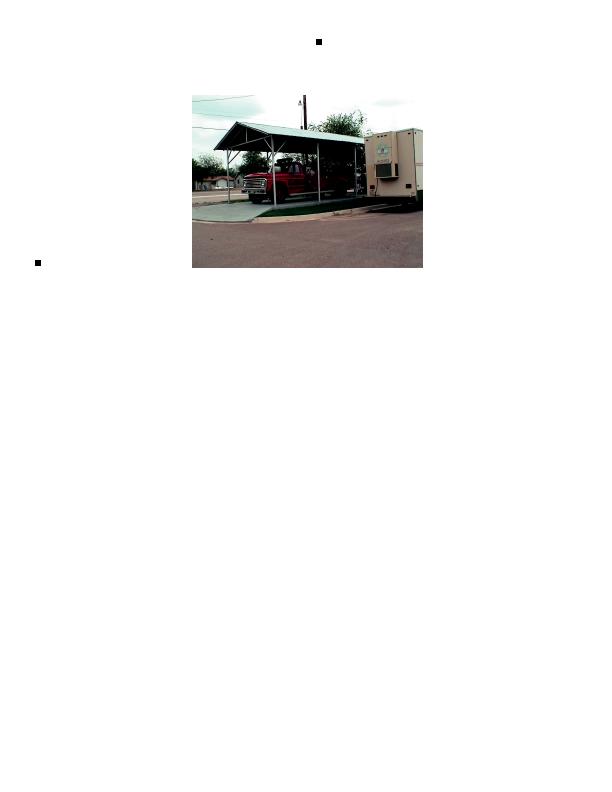
National Exposure Registry: Benzene
cluster investigation focused only on attendees of
Subregistry--The National Exposure Registry
the elementary school and residents are concerned
about an apparent excess of the disease in their
comprises chemical-specific subregistries designed
community that may
to aid in assessing the long-
be linked to exposure
term health consequences
to environmental
of low-level, long-term
contaminants. Bexar
exposures to hazardous
County was specifically
chemicals identified at
targeted for ALS
hazardous waste sites.
surveillance to address
Benzene is one of the
community concerns
chemicals selected for a
regarding exposures from
subregistry. The only site for
this subregistry in Texas is
Kelly Air Force Base and
the Three Lakes Municipal
an apparent excess of
Utility District in Harris
ALS.
County. Benzene, which is
Hazardous Substances
Emergency Events
Aging fire truck on the Kickapoo Traditional and soil, and is a known
Surveillance System
Tribe of Texas Reservation near Eagle Pass. human carcinogen, causes
(HSEES)--HSEES
aplastic anemia. Exposure to benzene has also been
was established by ATSDR in 1990 to collect
linked to genetic damage. Long-term exposure to
and analyze information about releases of
benzene in the air can cause cancer of the tissues
hazardous substances that need to be cleaned up or
that form white blood cells (leukemia). Health
neutralized according to federal, state, or local law,
outcome rates for this subregistry were compared
as well as threatened releases that result in a public
with national rates, as determined by the National
health action, such as an evacuation. The goal of
Health Interview Survey. Health outcomes reported
HSEES is to reduce the morbidity and mortality of
in significant excess by these subregistry members
first responders, employees, and the general public
during the data collection periods (for certain age
resulting from hazardous substances emergencies.
and sex groups) included anemia and other blood
Fifteen state health departments, including
disorders; arthritis, rheumatism, or other joint
Texas, currently participate in HSEES. HSEES
disorders; cancer; diabetes; kidney disease; liver
captures data on over 5,000 events annually. Of
problems; other respiratory allergies or problems
these, 80% occur at fixed facilities, and 20% are
such as hay fever; skin rashes, eczema, or other
transportation-related events. Most events occur
skin allergies; effects of stroke; and ulcers, gall
between 8:00 AM and 5:00 PM on Monday through
bladder trouble, or stomach or intestinal problems.
Friday. Persons most often injured are employees.
Baseline interviews were conducted in 1991;
The HSEES system is used to generate information
follow-up interviews were conducted in 1992,
for use by states to conduct presentations on
1993, 1995, 1997, and 2000.
planning prevention strategies for industries that
Tribal Government Collaboration
account for a significant number of spills; conduct
HazMat training courses, including information
In September 2003, an ATSDR staff member met with
on the risk for injury from methamphetamine
the Tribal Environmental Protection Department of the
labs; establish and maintain protection areas for
Kickapoo Traditional Tribe of Texas. The Kickapoo
municipal water systems; assist with the proper
Traditional Tribe of Texas is about 5 miles south of
placement of HazMat teams; develop fact sheets
Eagle Pass, Texas, on the Texas/Mexico border. At
on frequently spilled chemicals or chemicals that
EPA's request, ATSDR met with the Kickapoo Tribe to
cause a disproportionate number of injuries (e.g.,
discuss its emergency response capabilities. Funding
chlorine and ammonia); develop newsletters for
for this trip was provided by an interagency agreement
industry, responders, and environmental groups;
with EPA. The Kickapoo Tribe informed ATSDR that
and conduct presentations for state and local
the tribe does not have a police force or a fire depart-
emergency planners.
ment. The tribe has a small security staff housed in


 Previous Page
Previous Page
